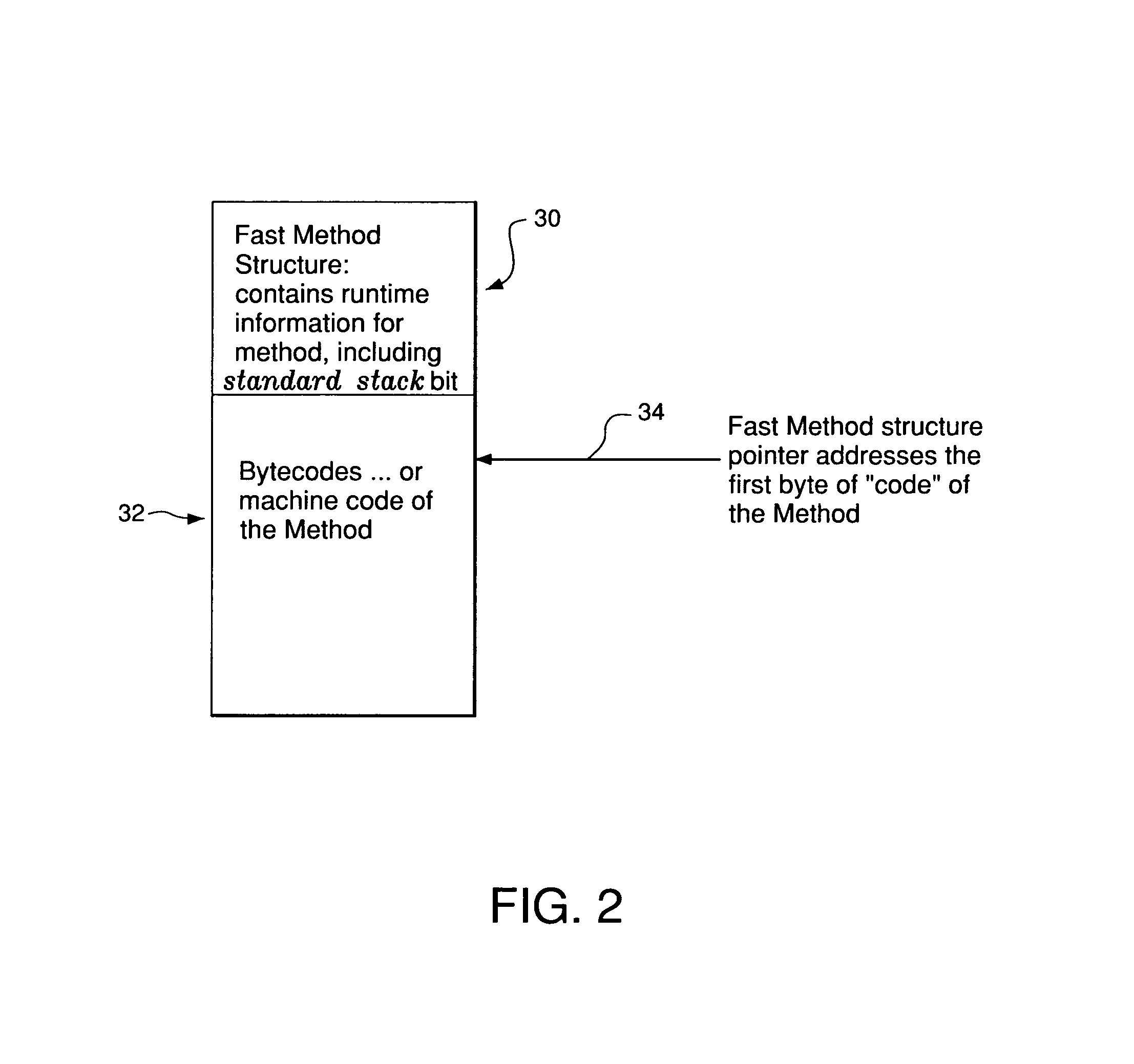Inter-method control transfer for execution engines with memory constraints
a technology of execution engine and memory constraint, applied in the field of software execution machines, can solve the problems of power consumption and memory footprint, and achieve the effect of reducing the overhead of execution engine and improving the overall execution time of applications
- Summary
- Abstract
- Description
- Claims
- Application Information
AI Technical Summary
Benefits of technology
Problems solved by technology
Method used
Image
Examples
Embodiment Construction
[0018]Before any embodiments of the invention are explained in full detail, it is to be understood that the invention is not limited in its application to the details of construction and the arrangement of components set forth in the following description or illustrated in the following drawings. The invention is capable of other embodiments and of being practiced or of being carried out in various ways. Also, it is to be understood that the phraseology and terminology used herein is for the purpose of description and should not be regarded as limiting. The use of “including,”“comprising,”“having,” and variations thereof herein is meant to encompass the items listed thereafter and equivalents thereof as well as additional items. It is assumed that the reader has familiarity with computer programming and architecture and, in particular, familiarity with Java and virtual machines. Further, as used herein the term “code” is used broadly to include, among things, both bytecode and compi...
PUM
 Login to View More
Login to View More Abstract
Description
Claims
Application Information
 Login to View More
Login to View More - R&D
- Intellectual Property
- Life Sciences
- Materials
- Tech Scout
- Unparalleled Data Quality
- Higher Quality Content
- 60% Fewer Hallucinations
Browse by: Latest US Patents, China's latest patents, Technical Efficacy Thesaurus, Application Domain, Technology Topic, Popular Technical Reports.
© 2025 PatSnap. All rights reserved.Legal|Privacy policy|Modern Slavery Act Transparency Statement|Sitemap|About US| Contact US: help@patsnap.com



